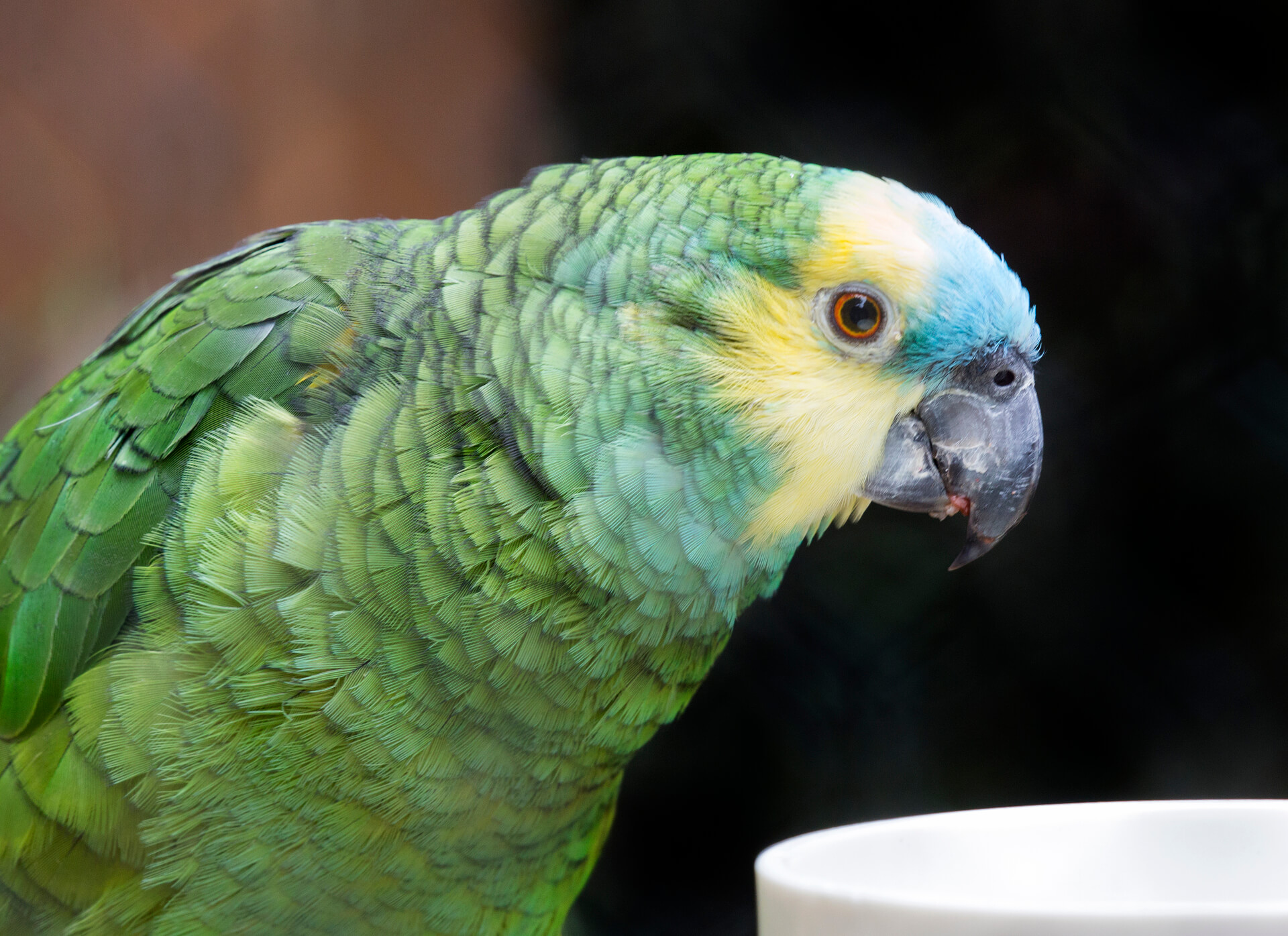Blue-fronted Amazon
Amazona aestiva

At the Zoo
Koret Center for Animal Rescue and Conservation
Fascinating Facts
- Blue-fronted Amazons are also known as blue-fronted parrots, turquoise-fronted Amazons and turquoise-fronted parrots. There are two subspecies recognized. While males and females look similar to the human eye, examining their feathers under ultraviolet light reveals that the patterns between males and females are very different.
Physical Characteristics
Blue-fronted Amazons are approximately 15 inches in length, weighing an average of 14 ounces. While color patterns vary between individuals, they are mostly green, with a blue forehead, yellow or blue face, red shoulders, red and dark blue feathers on the wings, yellow feathers in the tail, and black beak. Males and females appear similar in coloration.
Habitat/Diet
They feed on fruits, seeds, flowers, nuts and young leaves, including cactus fruits and palm seeds. They will also eat planted crops if available, particularly citrus crops.
They are found in forests, scrub lands, savanna and palm groves.
Social Behavior
Blue-fronted Amazons are monogamous and live in pairs, while part of a larger flock. Breeding takes place between October – March, and a nest is created in the cavity of an old growth tree. Between 1– 5 eggs are laid, which are incubated for 23 – 25 days, and the chicks fledge after 58 – 60 days. Both parents will care for the chicks. Blue-fronted Amazons communicate via a number of vocalizations, with a roster of specific calls, including alarm calls to warn the flock of danger. Pair bonds are maintained through allopreening and beak touching. They can live up to 70 years.
Status In The Wild
Blue-fronted Amazons are found in southern Brazil, Bolivia, Paraguay and northern Argentina.
Other
Threats to blue-fronted Amazons include habitat destruction and degradation. They prefer to nest in old growth trees, making deforestation a danger to their breeding habits. They are also persecuted by farmers and ranchers who consider them a “pest” species for eating crops. In addition, blue-fronted Amazons are threatened by the pet trade. In the wild, predators include raptors.
